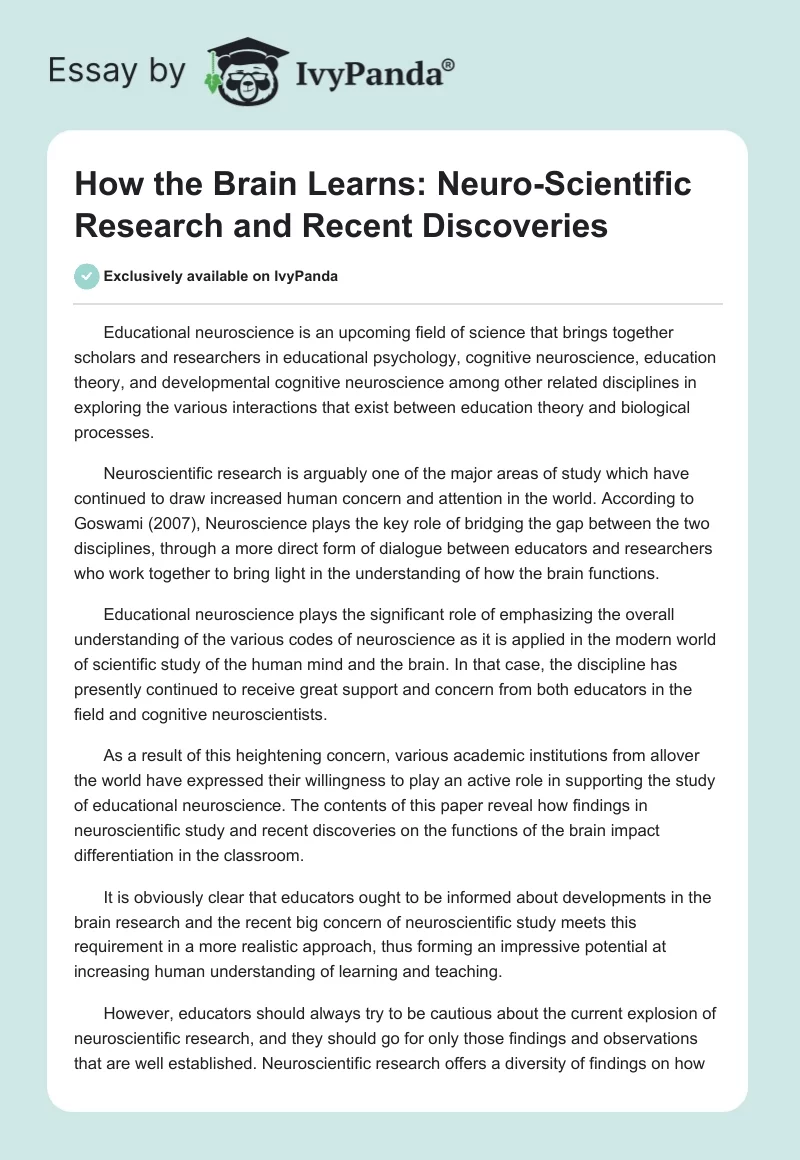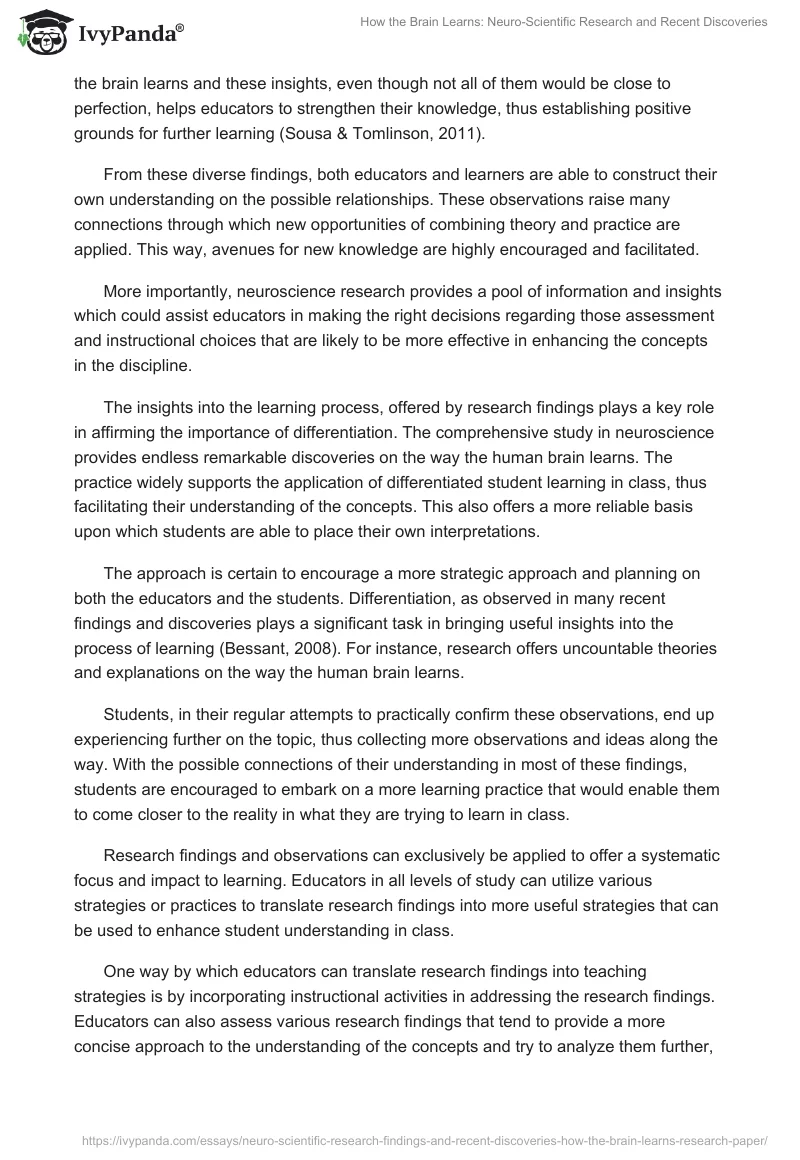Educational neuroscience is an upcoming field of science that brings together scholars and researchers in educational psychology, cognitive neuroscience, education theory, and developmental cognitive neuroscience among other related disciplines in exploring the various interactions that exist between education theory and biological processes.
Neuroscientific research is arguably one of the major areas of study which have continued to draw increased human concern and attention in the world. According to Goswami (2007), Neuroscience plays the key role of bridging the gap between the two disciplines, through a more direct form of dialogue between educators and researchers who work together to bring light in the understanding of how the brain functions.
Educational neuroscience plays the significant role of emphasizing the overall understanding of the various codes of neuroscience as it is applied in the modern world of scientific study of the human mind and the brain. In that case, the discipline has presently continued to receive great support and concern from both educators in the field and cognitive neuroscientists.
As a result of this heightening concern, various academic institutions from allover the world have expressed their willingness to play an active role in supporting the study of educational neuroscience. The contents of this paper reveal how findings in neuroscientific study and recent discoveries on the functions of the brain impact differentiation in the classroom.
It is obviously clear that educators ought to be informed about developments in the brain research and the recent big concern of neuroscientific study meets this requirement in a more realistic approach, thus forming an impressive potential at increasing human understanding of learning and teaching.
However, educators should always try to be cautious about the current explosion of neuroscientific research, and they should go for only those findings and observations that are well established. Neuroscientific research offers a diversity of findings on how the brain learns and these insights, even though not all of them would be close to perfection, helps educators to strengthen their knowledge, thus establishing positive grounds for further learning (Sousa & Tomlinson, 2011).
From these diverse findings, both educators and learners are able to construct their own understanding on the possible relationships. These observations raise many connections through which new opportunities of combining theory and practice are applied. This way, avenues for new knowledge are highly encouraged and facilitated.
More importantly, neuroscience research provides a pool of information and insights which could assist educators in making the right decisions regarding those assessment and instructional choices that are likely to be more effective in enhancing the concepts in the discipline.
The insights into the learning process, offered by research findings plays a key role in affirming the importance of differentiation. The comprehensive study in neuroscience provides endless remarkable discoveries on the way the human brain learns. The practice widely supports the application of differentiated student learning in class, thus facilitating their understanding of the concepts. This also offers a more reliable basis upon which students are able to place their own interpretations.
The approach is certain to encourage a more strategic approach and planning on both the educators and the students. Differentiation, as observed in many recent findings and discoveries plays a significant task in bringing useful insights into the process of learning (Bessant, 2008). For instance, research offers uncountable theories and explanations on the way the human brain learns.
Students, in their regular attempts to practically confirm these observations, end up experiencing further on the topic, thus collecting more observations and ideas along the way. With the possible connections of their understanding in most of these findings, students are encouraged to embark on a more learning practice that would enable them to come closer to the reality in what they are trying to learn in class.
Research findings and observations can exclusively be applied to offer a systematic focus and impact to learning. Educators in all levels of study can utilize various strategies or practices to translate research findings into more useful strategies that can be used to enhance student understanding in class.
One way by which educators can translate research findings into teaching strategies is by incorporating instructional activities in addressing the research findings. Educators can also assess various research findings that tend to provide a more concise approach to the understanding of the concepts and try to analyze them further, to establish any connections with what they are trying to teach about the functions of the human brain and how it learns.
Educators can also translate research findings into useful learning strategies that can aid in establishing effective learning grounds. The many different observations perceived through the study of neuroscience normally provides a perfect guidance on the direction which educators should take in addressing their students in a more convenient way that would enable them understand better.
Another useful way of translating research observations into useful teaching and learning strategies is by trying to come up with ways of proving the observed findings before coming into final conclusions about them.
References
Bessant, J. (2008). Hard wired for risk: Neurological science, the adolescent brain and developmental theory. Journal of Youth Studies, 11(3), 347-360.
Goswami, U. (2007). Educational neuroscience: Defining a new discipline for the study of mental representations. Mind, Brain, and Education, 1(3), 114-127.
Sousa, D. &Tomlinson, C. (2011). Differentiation and the brain. Bloomington: Solution Tree Press.


